All On a Summer's Morning
|
Widget for blogger by Way2Blogging | Via Spice Up Your Blog Gadgets
|
And What Became of the Miracle Bluebird?
Monday, June 21, 2021
7 commentsYes, there is sadness. Lots of it. But it's all so beautiful. Here's the nest, taken from the Church box for a quick photo on May 16. My old friend Jeff Warren, gone too soon, sleeps in the background.
I had only one box that had eggs that were near hatching--Warren 1. So I stuffed her full of egg food and put that sweet miracle baby in with their eggs, which didn't hatch for another three days! These fabulous parents fed Miracle, while the female continued to incubate her own eggs.
I kept a pretty close eye on the box, considering it's several miles from my house. Here is the brood on Day 10. But it's Day 13 for Miracle! The bird to the right, whose head is feathered, and whose wings you can see are feathering out, is Miracle. And I can see by the small amount of blue in those wing feathers that Miracle is a female. She's a bit behind in development for a 13-day-old bluebird, but given the incredibly lousy start she had, we'll cut her a lot of slack. This is working out really well. Yes, she has a three day lead on her foster sibs, but I don't think that's going to be a problem.
I visited them on Day 15 of the host chicks' life, and Day 18 of Miracle's. In the back, you can see a 15-day-old male cowering from my looming iPhone. Miracle, I think, is the sweet little blurry face in the foreground, peeking up. I didn't open the box--too late in their development, might scare them into fledging too soon. That was the last thing Miracle needed! This shot was taken May 16.
Here's a meta moment--your blogger making these photos. The Warren 1 pair are enthusiastic divebombers, alone among the birds I work with. This has always been the case at this box. Yep, he's hitting me! It takes me back to my least tern work in Connecticut in the early 1980's. Never let them see you flinch.
|
Widget for blogger by Way2Blogging | Via Spice Up Your Blog Gadgets
|
Placing the Miracle Chick- Part 5
Thursday, June 10, 2021
6 commentsBack home, I was actively subsidizing two more broods of bluebirds, the first to hatch on my trail. Here's how the oldest brood looked April 30. It was pretty easy to help them--I just walked out a few times a day, leaving a crock of mealworms on the roof of the box. The adults took care of the actual feeding. Man, they were happy to see me first thing on a wet, freezing, rainy morning!
They still appear out of nowhere whenever they see me, hoping for mealworms. Their babies fledged on May 4 at the age of 19 days, and the adults are keeping them nearby, and were still accepting handouts as of May 12. It brings me joy to help them along. I'd much prefer warm nights and sunny days, and not having to buy mealworms by the 3,000 lot, but they're well worth the effort. I get my mealworms from Tim at thenaturesway.com Always highest quality and fast shipping, and far more affordable than pet store worms!
In the yard, another box is fledging as I write on May 12, even with 32 degree night temperatures. You can be sure the adults are eager to see me pop out the door each morning!
And the Ritchie baby, left for dead by its mother on April 21? It's the big male at the bottom of this photo. Isn't that beautiful? He fledged along with his broodmates from the Hendershot nest somewhere around May 8. I still remember him, stone cold, but beginning to squirm in my bra on April 21. I call the incubator chick the Miracle Chick, but they're all miracles to me, surviving in this cruel spring.
My batting average--three chicks fostered and saved out of seven chicks and five eggs taken in--isn't anything to brag about. But I'm sure the additional broods I fed and subsidized are in far better shape than they would have been without the feedings. They may not have made it at all without the subsidy.
As much work as it's been--and it has been all-consuming--it is good and sweet and right to know there are bluebirds out there who wouldn't be on the earth without my help. I'm not sure I'd want to do this all again. Nah, I definitely don't want to have to do this again.
But then again, with the weather the way it has been these past two springs, and my heart in the shape it's in, I'm not sure I have a choice. Sometimes it snows in April.
|
Widget for blogger by Way2Blogging | Via Spice Up Your Blog Gadgets
|
Five Cold Eggs and a Miracle: Part 4
Thursday, June 3, 2021
5 commentsMeanwhile, in a box out along my driveway, a female bluebird inexplicably abandonded her clutch of five eggs on Day 11 of incubation--only three days from hatching! It took awhile for it to sink in on me that she'd done it, but on the snowy morning of April 21, I'm pretty sure she quit sitting and let her eggs go cold. None of my other bluebirds abandoned eggs--they all sat them steadfastly through the cold snap.
When I finally checked the driveway box on April 24, assuming she was sitting straight through, I was shocked to find them ice-cold. I was inclined to leave them. I have had this happen, and had the female return and resume incubation, and some of the clutch has hatched! However, I saw the female and her mate prospecting at the next box down my driveway, and I knew that meant that she had no intention of returning. She was already starting over.
For those who wonder: Male bluebirds have no bare brood patch on the abdomen for warming eggs, and they lack the instinct to incubate or brood young, so it's all about the female's choices here. The male plays a supporting role, bringing food to female and young, but if his mate decides to abandon eggs or young, the male is unequipped to keep them warm and alive.
I brought the cold eggs into the house, wondering if I could do anything for them. I candled them: all fertile. I could see bright red blood vessels, and the dark mass of the chick inside. The clear space is a gas space, which helps the chick breathe, and takes waste gases to be passed out through the shell.
|
Widget for blogger by Way2Blogging | Via Spice Up Your Blog Gadgets
|


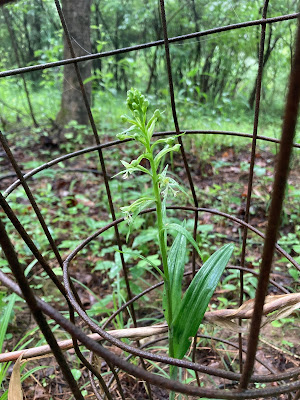













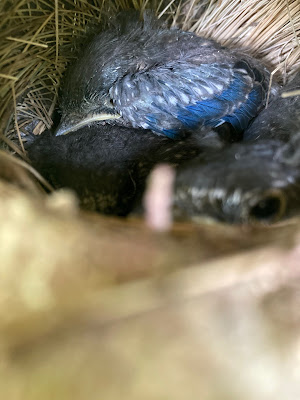
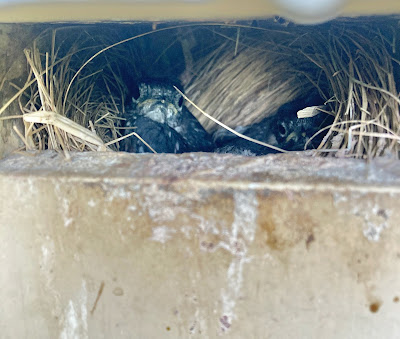



















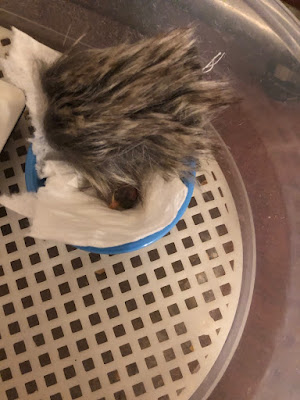

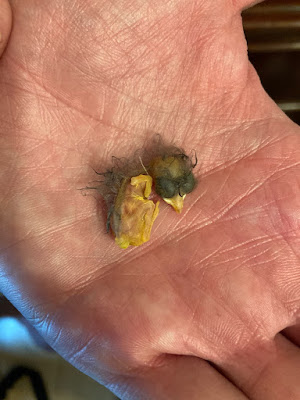






Monday, June 28, 2021
7 comments